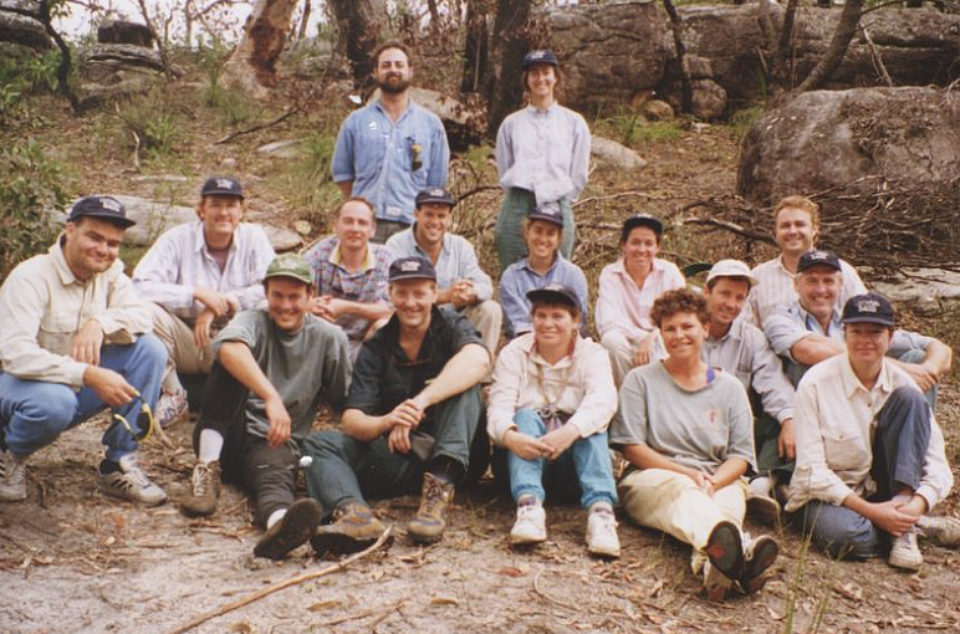
ICDA and BoardPro partnership unlocks digital governance tools for not-for-profits nationwide
Posted on 10 Dec 2025
Adele Stowe-Lindner, Executive Director, Community Directors The Institute of Community Directors…
Posted on 01 May 2024
By Greg Thom, journalist, Institute of Community Directors Australia

Bridging the gulf between the diametrically opposed aims of the charity and not-for-profit sector and global tech giants will be crucial if for-purpose organisations are to successfully capitalise on the opportunities presented by innovation and new technology.
In her keynote address at the Infoxchange Technology for Social Justice conference in Melbourne today, the chair of the Australian Charities and Not-for-profits Commission’s Advisory Board, Sarah Davies AM, said that on the surface at least, the approaches to ethics and values of the two sectors were far from aligned.
Ms Davies, who is also the CEO of the Alannah & Madeline Foundation, referenced the world’s most widely used mobile phone platform, Android, as an example of an enterprise that has been built on a revenue model based on harvesting users’ data.
“It extracts sovereignty from people,” said Ms Davies.
“Social justice organisations by contrast are all about building sovereignty in people.”

Ms Davies said the sector achieved this through building agency, equity, inclusion, justice, access, wellbeing, fairness and opportunity.
“A critical success factor in bringing multiple players, agents and partners together in pursuit of any effective positive change is an alignment of principles and values right from the start,” she said.
“It seems to me, even before we start, when we think about the vast and complicated tech world, we have a fundamental misalignment [of values].
“How do we navigate our maps together if our compasses are set to a different north?”
Now in its 20th year, the sector's largest technology-related event – formerly the ConnectingUp conference – will focus clearly on AI, with sessions ranging from “Social impact in the AI era” to “Effective and ethical use of AI in the NFP sector”.
A range of speakers, panellists and masterclass facilitators will cover the most pressing sector-related technology issues, topics and trends of 2024, with masterclass sessions to provide practical tools and training for NFP leaders to power their organisation’s digital journey.
Ms Davies used her address, titled “Technology for social justice: Navigating new digital frontiers and our true north”, to identify 12 key technology trends affecting the charity and for-purpose sector in Australia.
“You all know what they are – we feel them every day to some degree, and I’d warrant all are top of mind, regularly, in our thinking, work and planning.”
Impact and data: investment in evidence, evaluation and data-driven decision making
Climate and sustainability: the role the sector plays in mitigating climate change
Policy and regulation: regulatory reform and unpredictability of government funding
Income and fundraising: changes to giving patterns such as fewer people giving, but those who do donating more; growth in digital giving platforms; evolving donor preferences
Growing demand for services: fueled by rising income inequality
Demographic changes: ranging from an ageing population to increased cultural diversity
Increasing costs: making it difficult for NFPs to cater to increasing demand for services
Volunteering: addressing the fall in volunteer numbers, which, according to the ACNC declined by 596,000 between 2028 and 2021
Disruption of business models: marketisation of aged care, impact investing
Tech and digital innovation: cyber threats, data privacy, digitisation of services
Contradictory effects of globalisation: polarisation of values; increasing connectedness and international charitable collaboration versus polarisation of values; humanitarian crises
Future of work: difficulty recruiting and retaining skilled employees; changing worker expectations in relation to flexibility; growing focus on wellbeing and workforce diversity and inclusion
Ms Davies said technology was woven through each of these macro trends in multiple ways, making it vital for sector organisations to keep abreast of developments.
In one sector-specific example of the positive power of technology, Ms Davies highlighted how the Cancer Council’s savvy use of data and audience segmentation in its Biggest Morning Tea initiative had revolutionised mass-market fundraising campaigns.
Ms Davies said when considering the benefits and risks of new technology in pursuit of purpose, social justice organisations needed to ensure they were mindful of the needs, expectations and experiences of those who would be using it – from clients and volunteers to charitable donors.
“We need to keep alert for the implications, opportunities and the risks. To work our way through all the questions until we get to enough insight and clarity.”
Ms Davies, said while the Alannah & Madeline Foundation has a positive view of technology, she uses the environment in which it operates to highlight some of the frustrations, legislative gaps and risks associated with the new digital frontier.
“Each of us, against our purpose and role, needs to work out what we will use as our compass to guide us through the messy middle; what will hold us to our true north as we navigate the new digital frontiers?”
Ms Davies said for the Alannah & Madeline Foundation, that true north was the UN Convention on the Rights of the Child, and specifically the 2021 General Comment on children’s rights in relation to the digital environment.
“Digital technologies are present right across children's lives, shaping education, family life, friendships, play, service use and more,” she said.
“Children deserve to have their wellbeing, development and dignity upheld everywhere, including online.”

“It’s government’s responsibility to ensure children’s digital rights are upheld and realised; it’s tech companies’ responsibility to prevent their services and products being used in ways that violate these rights.”
Even though these rights are enshrined by the UN, there is no end of challenges when it comes to ensuring children are provided with the right to access digital resources and opportunities while also being protected from harm.
“There are lots of good initiatives – including having an exceptional eSafety Commissioner - around supporting schools and teachers with digital governance and culture and around building digital literacy competences in children and young people, in online safety resources and reporting mechanisms,” said Ms Davies.
“However, they are being built on the top of an inadequate set of sovereign national standards and laws that do not protect children's digital rights.”
Regulatory changes Ms Davies said she would like to see include:
“None of this is ground-breaking – all these regulations exist somewhere else in the world,” said Ms Davies.
Apart from regulatory reform, Ms Davies said it was vital to continue developing and promoting digital literacy and data privacy education in schools and the broader community and consult with children and young people about changes that affect them.
“It’s government’s responsibility to ensure children’s digital rights are upheld and realised; it’s tech companies’ responsibility to prevent their services and products being used in ways that violate these rights.”
Ms Davies said that while the community was reacting to the negative symptoms, behaviour and experiences related to new technology that are causing real harm, it was the practice of data harvesting that is the real problem.
While parents are increasingly concerned about the use of AI and the use of children’s images and voices to create child pornography and carry out extortion and scams, Ms Davies said it was not AI alone that has enabled this, but the theft of children’s data in the first place.
“There is no child data privacy protection – that’s our priority issue that we need to fix, urgently,” said Ms Davies.
“Unless we address the root design cause, we’ll be forever playing whack-a-mole.”

Posted on 10 Dec 2025
Adele Stowe-Lindner, Executive Director, Community Directors The Institute of Community Directors…

Posted on 10 Dec 2025
The Australia Institute has called on the federal government to force Australian businesses to be…

Posted on 10 Dec 2025
Economic empowerment is essential to enabling recovery, restoring agency and preventing future…
Posted on 10 Dec 2025
A long-time advocate for rough sleepers in northern New South Wales has been named her state’s…

Posted on 10 Dec 2025
What a year 2025 has been, particularly at a national level where the Parliament and politics as we…

Posted on 10 Dec 2025
Anyone working in an organisation knows it: meetings follow one after another at a frantic pace. On…

Posted on 10 Dec 2025
As a qualified yoga instructor who learned the practice in her hometown of Mumbai, Ruhee Meghani…

Posted on 10 Dec 2025
Community Directors trainer Jon Staley knows from first-hand experience the cost of ignoring…

Posted on 10 Dec 2025
Stressed, overwhelmed, exhausted… if you’re on a not-for-profit board and these words sound…

Posted on 10 Dec 2025
The Institute of Community Directors Australia trains over 22,000 people each year, which gives us…

Posted on 09 Dec 2025
The late Sir Vincent Fairfax is remembered as a business leader, a chairman of AMP, and an active…

Posted on 08 Dec 2025
A pioneering welfare effort that helps solo mums into self-employment, a First Nations-led impact…